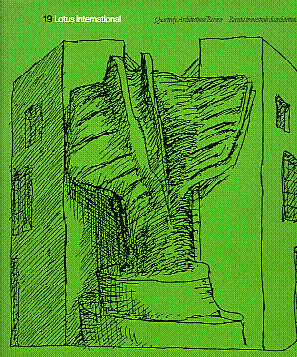
Pierluigi Nicolin, 19 Lotus International (Milan: Gruppo Editoriale Electa, 1978).
Contents
The urban block
Enrico Guidoni:
Street and block
Leon Krier:
A simple architecture of streeta and squares
Manuel de Solà-Morales:
Towards a definition
Leon Krier, Manuel de Solà-Morales:
Ensanche Cerdá
Leon Krier:
Fourth lesson
Josef P. Kleihues:
Park Lenné
Josef P. Kleihues:
Housing blocks
James Stirling:
Meineke Strasse
Rob Krier:
The corner of the building
O.M. Ungers, Rem Koolhaas, et al:
Cities within the city
Rodrigo Pérez de Arce:
The urban redevelopment of the city
Martina Schneider:
Town idiom, urban image
Martine Schneider:
Anticipating the Neo-Romantic

Pierluigi Nicolin, 22 Lotus International (Milan: Gruppo Editoriale Electa, 1978).
Contents
Small works
Michael Graves:
Swedish connection
Michael Graves:
A ware-house conversion
Gregotti Associati:
Analogies and comparisons
Edward Johns:
Urban villas
O.M. Ungers:
Pyramus and Thisbe
Oriel Bohigas:
A basic concept fro four houses
Rob Krier:
Constructing the house on the square
A.J. von Kostelac:
Haus Malchen
Giogio Grassi:
Project for a small house
Gae Aulenti:
Elements of a house
Daniele Vitale:
A condition of work -- The architecture of Umberto Riva
Alvaro Siza Vieira:
The starting process
Emilio Battisti:
The intelligence of architecture as a craft -- The recent works of Mario Botta
Daniele Vitale:
Border elements -- Buildings at Fidenza
Francesco Venezia:
Marginal squares -- Projects for Lauro
Soria Badia:
Ventilation turrets
L. Peña Ganchegui:
A terminal -- A square by the sea at San Sabastián
Bruno Reichlin:
The axonometric as a project -- A study on Alberto Sartoris
Pierluigi Nicolin:
Intrinsic architecture -- Works by Bruno Reichlin and Fabio Reinhart
P. Nicolin, I. Rota:
Heterotopia versus Utopia
Franco Raggi:
In their work of formal reduction... -- Projects by C. Baldisseri, G. Grossi, B. Minardi
Marco Dezzi Bardeschi:
The right to repeat -- Projects for the reconstruction of a facade by Victor Horta
Marco Dezzi Bardeschi:
Projects for the rearrangement of the Urbino Art Gallery
| |
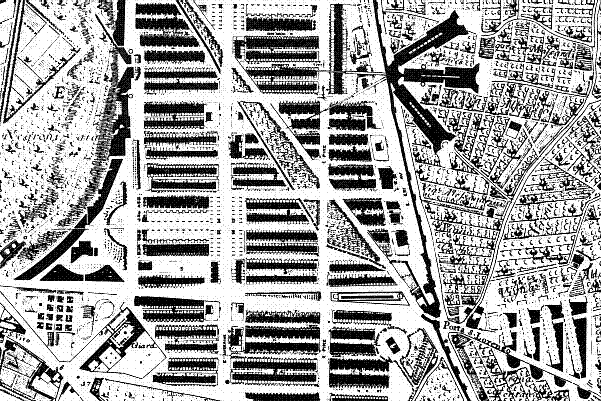
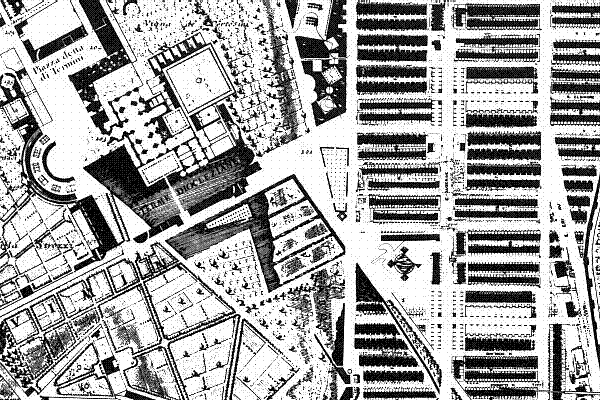
Romaldo Giurgola, Roma Interrotta: Sector VI (1978).
Romaldo Giurgola has made a small city in the image of the upper west side of Manhattan [although the urban context employed is from a Sanbourne map of North Philadelphia] with all the amenities of Ebenezer Howard's garden city. With residences, offices, factories and recreation all within walking distance, and all appropriately 'greened', Giurgola's project is eminently believable and would probably be a very successful urban development. It is ironic that an expatriate Italian would export urban America back to Rome -- a curious reversal of the American preference for the importation of things European. But it is difficult to accept the ease of Giurgola's wholesale purchase of the gridiron of New York or Philadelphia as the ultimate urban paradigm without further question or speculation.
Alan Chimacoff, "Roma Interrotta Reviewed," Architectural Design, vol. 49, no. 3-4, 1979.
Using Nolli's Rome of 1748 as a start, Giurgola essentially created a "virtual" rendition of the surroundings that best suits his architectural ideals. It is an environment that harbors a deep respect for existing conditions, both natural and man-made. This is a paradigm that "works," largely because its architectural forms strive to demonstrate how things actually do work. It remains faithfully "virtual," however, because it is real and unreal at the same time.
seeking precedents... ...finding inspiration
| |
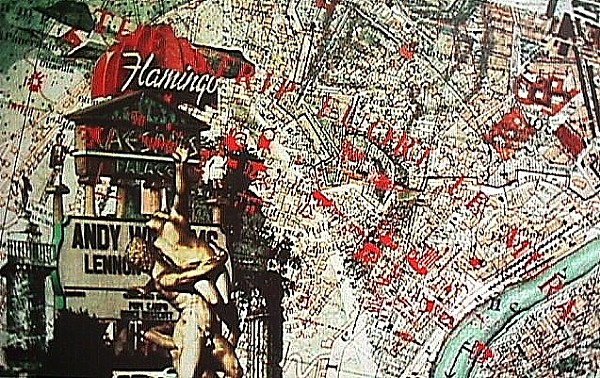
Venturi and Rauch, Roma Interrotta: Sector VII (1978).
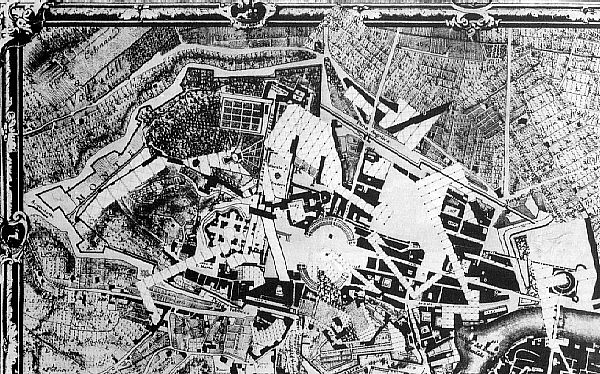
Piero Sartogo, Roma Interrotta: Sector I (1978).
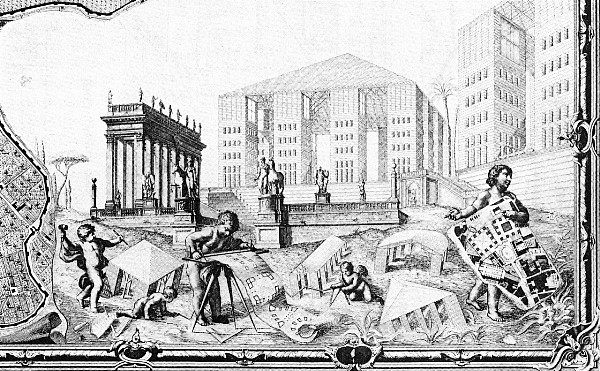
Leon Krier, Roma Interrotta: Sector XII (1978).
|